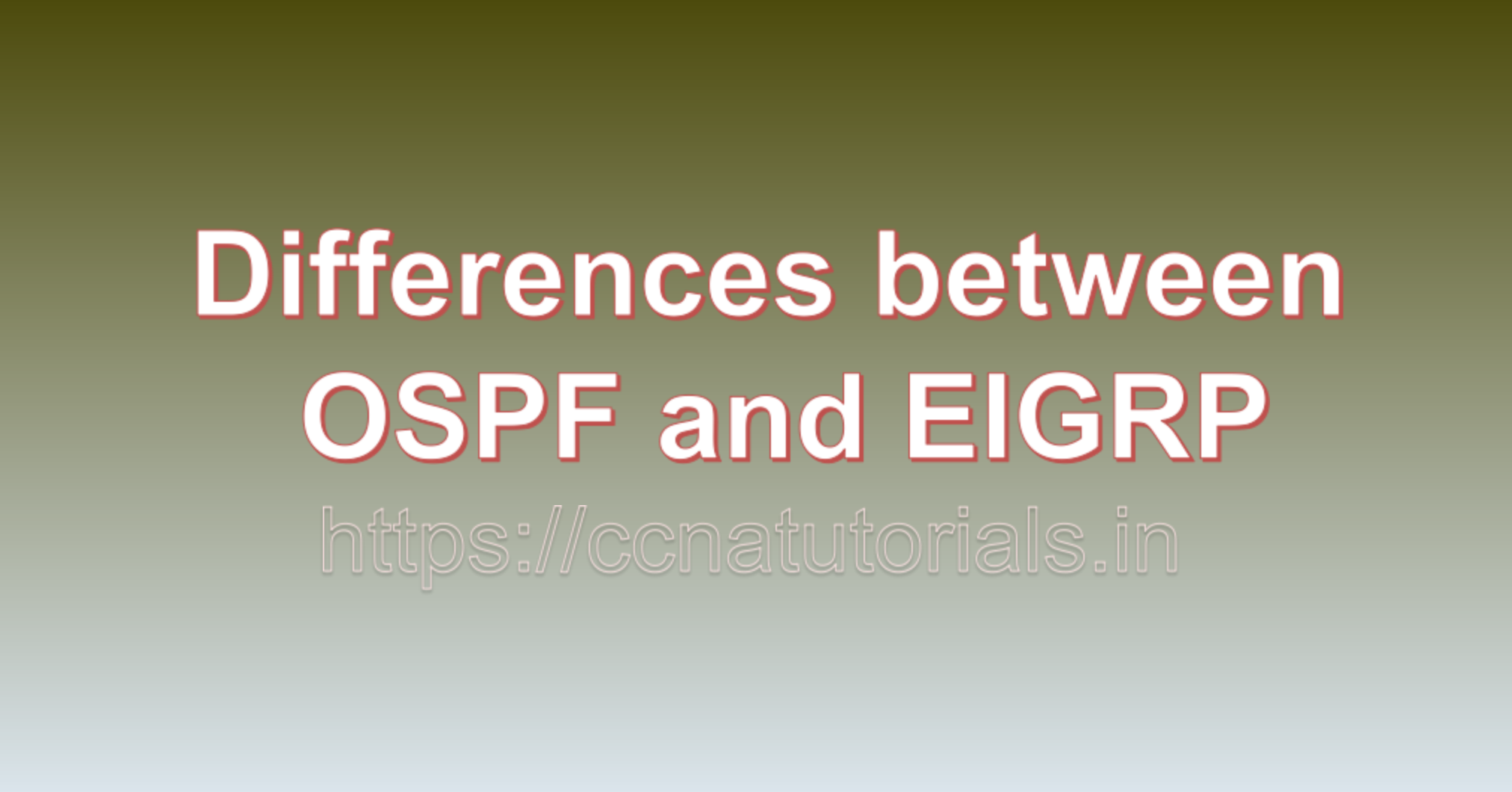Contents of this article
In this article, I describe the Differences between OSPF and EIGRP. OSPF (Open Shortest Path First) and EIGRP (Enhanced Interior Gateway Routing Protocol) are both dynamic routing protocols used in computer networks, but they have significant differences in terms of their operation, characteristics, and deployment. Here are the key differences between OSPF and EIGRP:
1. Vendor-Specific vs. Open Standard:
- OSPF is an open standard routing protocol defined by the Internet Engineering Task Force (IETF). It is vendor-neutral and widely supported by various router manufacturers.
- EIGRP, on the other hand, is a Cisco-proprietary routing protocol. It is available only on Cisco devices and is not interoperable with routers from other vendors.
2. Routing Protocol Type:
- OSPF is a link-state routing protocol. It operates by exchanging information about the state of router interfaces and calculating the shortest path tree to all network destinations. OSPF uses the Dijkstra algorithm to determine the best path.
- EIGRP is a hybrid routing protocol. It combines aspects of both distance-vector and link-state routing protocols. EIGRP uses a proprietary algorithm to calculate routes based on bandwidth, delay, reliability, and load.
3. Metric Calculation:
- OSPF uses a cost-based metric called “cost” or “metric” to determine the best path. The cost is calculated based on the bandwidth of the link, and administrators can influence it by changing the reference bandwidth.
- EIGRP uses a composite metric known as “metric” or “composite metric” that takes into account multiple factors such as bandwidth, delay, reliability, and load. EIGRP allows administrators to fine-tune metric calculations using K-values.
4. Convergence Time:
- OSPF typically has faster convergence times compared to EIGRP. OSPF routers can quickly adapt to topology changes and converge the network because of its link-state database and SPF tree calculation.
- EIGRP is known for its fast convergence as well, but it may not be as fast as OSPF in larger networks due to the need to propagate and calculate updates across routers.
5. Scalability:
- OSPF is highly scalable and is suitable for both small and large networks. It can be divided into multiple areas to reduce routing table size and control routing information propagation.
- EIGRP is also scalable, but it is often used in smaller to medium-sized networks. In large networks, EIGRP may require careful design and network segmentation to manage scalability effectively.
6. Administrative Distance:
- OSPF has a fixed administrative distance of 110 for internal routes and 110 for external routes (when using OSPF as the routing protocol).
- EIGRP has a default administrative distance of 90 for internal routes and 170 for external routes, which can be changed by network administrators.
7. Load Balancing:
- OSPF supports equal-cost load balancing by default, allowing traffic to be split across multiple paths if they have the same cost.
- EIGRP offers unequal-cost load balancing, which means it can balance traffic across paths with different metrics.
8. Convergence Behavior:
- OSPF converges based on the changes in the network’s link-state database. It sends updates only when there’s a change in the network topology.
- EIGRP uses a diffusing update algorithm (DUAL) to calculate routes and can send partial updates to other routers when the topology changes.
Conclusion for Differences between OSPF and EIGRP
Above are the main differences between OSPF and EIGRP which are useful for CCNA Exam. OSPF is an open standard, link-state routing protocol with fast convergence and widespread vendor support, making it suitable for various network environments. EIGRP, being a Cisco-proprietary hybrid routing protocol, offers fast convergence and advanced features but is limited to Cisco devices. The choice between OSPF and EIGRP often depends on factors like network size, vendor preferences, and specific routing requirements.






